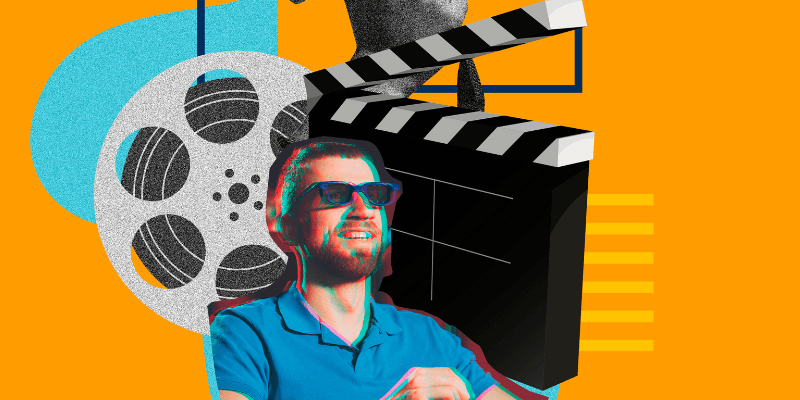
How Difficult and Different Traditional and Modern Methods of Getting Hired in the Media Industry
The media industry has always been competitive, but the ways people break into it have changed drastically over the years. Traditional hiring methods often involved formal applications, networking at industry events, or climbing the ladder in TV stations, newspapers, and production houses. Today, modern methods of getting hired in the media industry revolve around personal branding, digital portfolios, and even viral content. Both approaches come with their challenges and understanding the difference can help young aspirants plan their careers more effectively.
Traditional Methods of Getting Hired in Media
Before the rise of digital platforms, opportunities in the media industry were limited and heavily gatekept.
1. Networking and Industry Connections
Hiring often relied on personal introductions. Those with access to influential contacts had an advantage.
- Difficulty: Limited opportunities for outsiders.
2. Formal Education and Internships
Universities and journalism schools played a big role. Graduates often began as interns at newspapers or TV studios, slowly moving up.
- Difficulty: Years of work before landing stable positions.
3. Job Boards and Classifieds
Applicants depended on newspapers, trade journals, and in-person job boards.
- Difficulty: Fewer openings, with hundreds vying for the same roles.
Pro Tip: Traditional routes required patience, persistence, and long-term commitment.
Modern Methods of Getting Hired in Media
With digital transformation, modern hiring in media looks very different. Opportunities are more accessible, but competition is global.
1. Personal Branding on Social Media
Platforms like LinkedIn, Instagram, and YouTube allow aspiring media professionals to showcase their skills directly.
- Example: A video editor posting creative reels on Instagram can attract agency offers.
2. Digital Portfolios & Freelance Platforms
Websites like Behance, Fiverr, and Upwork let candidates present their work to employers worldwide.
- Example: Many young graphic designers now land jobs through Upwork gigs before moving into full-time media roles.
3. Networking Through Communities
Instead of physical events, networking now happens in Discord servers, Twitter Spaces, or LinkedIn groups.
- Pro Tip: Joining niche media communities online can lead to collaborations and job offers.
4. Direct Hiring via Content
Some professionals get hired based on the content they create.
- Example: Lilly Singh (IISuperwomanII) built a YouTube empire, which later opened doors to TV hosting and production opportunities.
Key Differences Between Traditional and Modern Hiring
|
Aspect |
Traditional Methods |
Modern Methods |
|
Access |
Limited, gatekept |
Global, open via internet |
|
Timeline |
Slow career growth |
Faster recognition possible |
|
Portfolio |
Degrees, internships |
Digital content, online portfolios |
|
Networking |
In-person events |
Social media, online groups |
|
Challenges |
Few opportunities, insider-driven |
Oversaturation, algorithm-driven |
Pro Tip: Modern methods offer speed, but require consistency and adaptability. Traditional methods are slower but offer strong foundational credibility.
Challenges in Both Systems
- Traditional: Tough for outsiders without connections; slow recognition.
- Modern: Easy entry but crowded; visibility depends on algorithms.
- Common Ground: Both require creativity, persistence, and the ability to stand out.
Real-Life Insight
- Traditional Example: Barkha Dutt built her career through formal journalism education and newsroom training before becoming a household name.
- Modern Example: Emma Chamberlain started with YouTube videos, bypassed traditional pathways, and now collaborates with major global brands.
Both show that talent, combined with the right approach, matters more than the path taken.
Conclusion
The media industry hiring process has evolved from slow, gatekept, traditional pathways to fast-paced, digital-first opportunities. While traditional methods emphasized formal structures and patience, modern hiring empowers creators to showcase talent directly. However, the competition is fierce, and building credibility is as important as visibility.
FAQs
-
What are traditional methods of getting hired in the media industry?
Through networking, internships, and job ads in newspapers or trade journals.
-
How are modern hiring methods in the media industry different?
They rely on digital portfolios, social media, and freelance platforms.
-
Which is better: traditional or modern hiring in the media?
Traditional offers credibility; modern offers speed and global reach.
-
Can someone succeed in the media industry without formal education today?
Yes, many succeed with skills, content creation, and digital visibility.
-
What skills help candidates stand out in both hiring processes?
Creativity, communication, adaptability, and strong digital presence.
